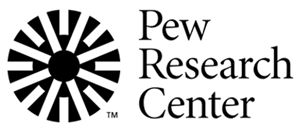Uncategorized
For one group of friends separated by geography, a single Israel experience builds lifelong bonds
When Ashley Inbar of Portland, Maine, got married in a traditional Jewish ceremony at the Jamaican beach resort of Ocho Rios in early January, there were five very special names on the guest list.
Just half a decade earlier, they were all complete strangers.
But then they met in Israel on an unusual Birthright trip geared toward “older participants” — those ages 27 to 32 — and forged bonds that have only grown over the years. When that 2018 trip drew to a close, six of them resolved to hold annual in-person reunions, despite the vast geographical distances that separate them.
“Pretty much right when we got home, we started planning to meet up somewhere,” said Inbar, who heads fundraising for the Jewish Community Alliance of Southern Maine. “Our first trip was to Denver, then we traveled north to Redstone, Colorado, and stayed for the weekend. As soon as we end one trip, we start planning the next one. We see each other as often as we can, and we talk every day through group chats on Instagram.”
The tight bonds established by the six friends — Inbar, Tim Campbell, Max Staplin, Carly Herbst, Simon Muller and Jared Glassman — are part of the goal of Birthright Israel, which seeks to offer participants a “life-changing experience.”
While forging bonds between Diaspora Jews and Israel is the main purpose of the trips, which are given to participants at no cost to them, the 10-day Birthright experience also aims to strengthen both participants’ Jewish identity and their connection to fellow Jews (including Israelis). Countless long-lasting friendships and romances that started on Birthright have blossomed into marriages and Jewish families.
From Inbar’s group five years ago, the vast majority of participants are still in touch, she said.
“There were 38 of us, and our entire group got along really well,” Inbar said. “We were all at similar places in life, and all of us already had careers. Even today, 95% of us are still connected through social media.”
During the pandemic, when the six couldn’t meet up in person, they held biweekly Zoom chats where they’d talk for hours on end, playing games and discussing the ups and downs of their lives — including engagements, illnesses, deaths of family members and job promotions — as well as their shared memories of their Israel experience.
Ashley Inbar, third from right, with her Birthright friends celebrates her January 6, 2023, wedding on the beach in Ocho Rios, Jamaica. (Courtesy of Ashley Inbar)
The group also stayed in touch with the Israeli security guard, Gal, who escorted them on the trip. Gal video-chats with the group at times of conflict in Israel to share his experiences on the ground — and at other times to practice his English. “He just became an integral part of our collective experience, and I think it was as impactful for him as it was for us,” Inbar said.
Staplin, 36, a franchise attorney in Philadelphia, says the 2018 Birthright trip was one of the best experiences of his life. While the tours to the Dead Sea and Masada were amazing and the vibrancy of Tel Aviv unforgettable, he said, what remains with him most are the friendships he formed during those 10 days.
“We’d stay up till 1 a.m. every night talking. We knew then that we’d be friends for the rest of our lives,” Staplin said. “We decided to have a reunion every year. The first was in New Orleans, then the next year we visited Ashley in Maine. As we were figuring out where to do the next reunion, Ashley got engaged.”
Since 1999, more than 800,000 young Jews from 68 countries have visited Israel on free 10-day trips offered through Birthright, known in Hebrew as Taglit (Discovery). The vast majority were 18 to 26, but from mid-2018 until recently some 13,000 Jews in the 27 to 32 age bracket got to visit Israel as well, according to Noa Bauer, Birthright’s vice president of global marketing.
Now that the pandemic has ended and trips to Israel are back in full force, the organization is seeing its highest demand ever and can’t accommodate all would-be participants without raising additional funds.
“Given the limited spots, we went back to the original age group of 18 to 26,” Bauer said, “though we did allow those who missed out during Covid to participate this past summer as a last chance even if they aged out during the pandemic.”
On Inbar’s trip, the cohort of older Birthright participants included two married couples and several people with children, including her.
Visiting Israel at an older age made all the difference to Glassman, a 36-year-old firefighter in New Orleans. He cited “a much higher maturity level” as one of the advantages of doing Birthright when he did.
“At 18 or 19, I wouldn’t have appreciated it as much,” Glassman said. “Everyone on our group really wanted to be there. In my case, as a young adult, I became much closer to my local Jewish community. I’m a pretty active member of my temple, Touro Synagogue, so when Birthright opened that slot for my age group, it was almost like it was meant to be.”
Staplin said that what really stood out from his experience was the 360-degree view of Israeli life and history that the Birthright trip gave him – not something he could have gotten on a typical vacation.
Six participants of a 2018 Birthright Israel trip gather for their annual reunion in 2022 in New Orleans, Louisiana. (Courtesy of Ashley Inbar)
“The most meaningful part was gaining an understanding of what day-to-day life is like in a country with so much history but still in the middle of so much conflict in present times,” he said. “Watching the people of Tel Aviv just going about their regular work days despite the announcement of the largest rocket attacks in years. Taking a bus ride through the middle of nowhere to Masada and learning about what happened there centuries before America was discovered, and then seeing the daily struggles of the Bedouins the next day. Going from the Western Wall to the Mahane Yehuda Market. Eating schnitzel in a kibbutz and then eating fancy Thai-fusion food at a restaurant in Tel Aviv.”
Herbst was 32 when she went on Birthright. Until then, she said, her travel priorities were to visit countries other than Israel, even though her older brother had gone on Birthright and had a positive experience.
“I wasn’t that interested at the age when you’re supposed to go,” Herbst said. “But our group had a different perspective. We weren’t looking just to get a free trip. Even my Jewish identity was certainly different for me in my 30s than in my 20s.”
Now 37, Herbst works in business development at a New York City tech startup.
“For me, what’s special about Israel is the enduring history of religion, and not only of Judaism,” she said. “Even seeing how strong of a presence Islam and Christianity has there was really fascinating for me. There’s no other place in the world where you see that.”
Muller, 37, grew up outside Rochester, New York, and was supposed to go on Birthright in his mid-20s. But a month before his planned trip, Muller lost his job after the congressional office where he was working in Washington, D.C., suddenly closed. He never got around to rescheduling the Israel trip, and then he aged out.
Nearly six years later, he said, he got an email that Birthright was doing a pilot program for older Jews.
“It was just before my 32nd birthday, I didn’t know anybody else,” Muller recalled. “It was a shot in the dark. I had low expectations.”
The trip turned out to be one of the milestones in his life.
“I found people I really clicked with,” said Muller, now an international trade consultant in Seattle. “We all live in different places and have different interests, but Birthright really bonded us. It’s been a wonderful experience.”
—
The post For one group of friends separated by geography, a single Israel experience builds lifelong bonds appeared first on Jewish Telegraphic Agency.
Uncategorized
How the Global Religious Landscape Changed from 2010 to 2020

Muslims grew fastest; Christians lagged behind global population increase
• Christians are the world’s largest religious group, at 28.8% of the global population. They are a majority everywhere except the Asia-Pacific and Middle East-North Africa regions. Sub-Saharan Africa has surpassed Europe in having the largest number of Christians. But Christians are shrinking as a share of the global population, as millions of Christians “switch” out of religion to become religiously unaffiliated.

• Muslims are the world’s second-largest religious group (25.6% of the world’s population) and the fastest-growing major religion, largely due to Muslims’ relatively young age structure and high fertility rate. They make up the vast majority of the population in the Middle East-North Africa region. In all other regions, Muslims are a religious minority, including in the Asia-Pacific region (which is home to the greatest number of Muslims).

• The religiously unaffiliated population is the world’s third-largest religious category (24.2% of the global population), after Christians and Muslims. Between 2010 and 2020, religiously unaffiliated people grew more than any group except Muslims, despite their demographic disadvantages of an older age structure and relatively low fertility. The unaffiliated made up a majority of the population in 10 countries and territories in 2020, up from seven a decade earlier.
• Hindus are the fourth-largest religious category (14.9% of the world’s population), after Christians, Muslims and religiously unaffiliated people. Most (99%) live in the Asia-Pacific region; 95% of all Hindus live in India alone. Between 2010 and 2020, Hindus remained a stable share of the world’s population because their fertility resembles the global average, and surveys indicate that switching out of or into Hinduism is rare.
• Buddhists (4.1% of the world’s population) are the only group in this report whose number declined worldwide between 2010 and 2020. This was due both to religious disaffiliation among Buddhists in East Asia and to a relatively low birth rate among Buddhists, who tend to live in countries with older populations. Most of the world’s Buddhists (98%) reside in the Asia-Pacific region, the birthplace of Buddhism.
• Jews, the smallest religious group analyzed separately in this report (0.2% of the world’s population), lagged behind global population growth between 2010 and 2020 – despite having fertility rates on par with the global average – due to their older age structure. Most Jews live either in North America (primarily in the United States) or in the Middle East-North Africa region (almost exclusively in Israel).
These are among the key findings of a Pew Research Center analysis of more than 2,700 censuses and surveys, including census data releases that were delayed due to the coronavirus pandemic. This report is part of the Pew-Templeton Global Religious Futures project, which analyzes global religious change and its impact on societies around the world. Funding for the Global Religious Futures project comes from The Pew Charitable Trusts and the John Templeton Foundation.
Uncategorized
Antisemitism in some unlikely places in America

By HENRY SREBRNIK Antisemitism flourishes in a place where few might expect to confront it – medical schools and among doctors. It affects Jews, I think, more emotionally than Judeophobia in other fields.
Medicine has long been a Jewish profession with a history going back centuries. We all know the jokes about “my son – now also my daughter – the doctor.” Physicians take the Hippocratic Oath to heal the sick, regardless of their ethnicity or religion. When we are ill doctors often become the people who save us from debilitating illness and even death. So this is all the more shocking.
Yes, in earlier periods there were medical schools with quotas and hospitals who refused or limited the number of Jews they allowed to be affiliated with them. It’s why we built Jewish hospitals and practices. And of course, we all shudder at the history of Nazi doctors and euthanasia in Germany and in the concentration camps of Europe. But all this – so we thought – was a thing of a dark past. Yet now it has made a comeback, along with many other horrors we assume might never reappear.
Since the Hamas attack on Israel on October 7, 2023, there has been a resurgence of antisemitism, also noticeable in the world of healthcare. This is not just a Canadian issue. Two articles on the Jewish website Tablet, published Nov. 21, 2023, and May 18, 2025, spoke to this problem in American medicine as well, referencing a study by Ian Kingsbury and Jay P. Greene of Do No Harm, a health care advocacy group, based on data amassed by the organization Stop Antisemitism. They identified a wave of open Jew-hatred by medical professionals, medical schools, and professional associations, often driven by foreign-trained doctors importing the Jew-hatred of their native countries, suggesting “that a field entrusted with healing is becoming a licensed purveyor of hatred.”
Activists from Doctors Against Genocide, American Palestinian Women’s Association, and CODEPINK held a demonstration calling for an immediate cease-fire in Gaza at the Hart Senate Office Building in Washington, D.C., Nov. 16, 2023, almost as soon as the war began. A doctor in Tampa took to social media to post a Palestinian flag with the caption “about time!!!” The medical director of a cancer centre in Dearborn, Michigan, posted on social media: “What a beautiful morning. What a beautiful day.” Even in New York, a physician commented on Instagram that “Zionist settlers” got “a taste of their own medicine.” A Boston-based dentist was filmed ripping down posters of Israeli victims and a professor at the University of Pennsylvania Perelman School of Medicine did the same. Almost three-quarters of American medical associations felt the need to speak out on the war in Ukraine but almost three-quarters had nothing to say about the war in Israel.
Antisemitism in academic medical centres is fostering noxious environments which deprive Jewish healthcare professionals of their civil right to work in spaces free from discrimination and hate, according to a study by the Data & Analytics Department of StandWithUs, an international, non-partisan education organization that supports Israel and fights antisemitism.
“Academia today is increasingly cultivating an environment which is hostile to Jews, as well as members of other religious and ethnic groups,” StandWithUs director of data and analytics, and study co-author, Alexandra Fishman, said on May 5 in a press release. “Academic institutions should be upholding the integrity of scholarship, prioritizing civil discourse, rather than allowing bias or personal agendas to guide academic culture.”
The study, “Antisemitism in American Healthcare: The Role of Workplace Environment,” included survey data showing that 62.8 per cent of Jewish healthcare professionals employed by campus-based medical centres reported experiencing antisemitism, a far higher rate than those working in private practice and community hospitals. Fueling the rise in hate, it added, were repeated failures of DEI (diversity, equity, and inclusion) initiatives to educate workers about antisemitism, increasing, the report said, the likelihood of antisemitic activity.
“When administrators and colleagues understand what antisemitism looks like, it clearly correlates with less antisemitism in the workplace,” co-author and Yeshiva University professor Dr. Charles Auerbach reported. “Recognition is a powerful tool — institutions that foster awareness create safer, more inclusive environments for everyone.”
Last December, the Data & Analytics Department also published a study which found that nearly 40 per cent of Jewish American health-care professionals have encountered antisemitism in the workplace, either as witnesses or victims. The study included a survey of 645 Jewish health workers, a substantial number of whom said they were subject to “social and professional isolation.” The problem left more than one quarter of the survey cohort, 26.4 per cent, “feeling unsafe or threatened.”
The official journal of the Alliance for Academic Internal Medicine concurs. According to “The Moral Imperative of Countering Antisemitism in US Medicine – A Way Forward,” by Hedy S. Wald and Steven Roth, published in the October 2024 issue of the American Journal of Medicine, increased antisemitism in the United States has created a hostile learning and practice environment in medical settings. This includes instances of antisemitic behaviour and the use of antisemitic symbols at medical school commencements.
Examples of its impact upon medicine include medical students’ social media postings claiming that Jews wield disproportionate power, antisemitic slogans at the University of California, Los Angeles (UCLA) David Geffen School of Medicine, antisemitic graffiti at the University of California, San Francisco (UCSF) Cancer Centre, Jewish medical students’ exposure to demonization of Israel diatribes and rationalizing terrorism; and faculty, including a professor of medicine at UCSF, posting antisemitic tropes and derogatory comments about Jewish health care professionals. Jewish medical students’ fears of retribution, should they speak out, have been reported. “Our recent unpublished survey of Jewish physicians and trainees demonstrated a twofold increase from 40% to 88% for those who experienced antisemitism prior to vs after October 7,” they stated.
In some schools, Jewish faculty are speaking out. In February, the Jewish Faculty Resilience Group at UCLA accused the institution in an open letter of “ignoring” antisemitism at the School of Medicine, charging that its indifference to the matter “continues to encourage more antisemitism.” It added that discrimination at the medical school has caused demonstrable harm to Jewish students and faculty. Student clubs, it said, are denied recognition for arbitrary reasons; Jewish faculty whose ethnic backgrounds were previously unknown are purged from the payrolls upon being identified as Jews; and anyone who refuses to participate in anti-Zionist events is “intimidated” and pressured.
Given these findings, many American physicians are worried not only as Jewish doctors and professionals, but for Jewish patients who are more than ever concerned with whom they’re meeting. Can we really conceive of a future where you’re not sure if “the doctor will hate you now?”
Henry Srebrnik is a professor of political science at the University of Prince Edward Island.
Uncategorized
The 2025 Toronto Walk (and talk ) for Israel

By GERRY POSNER There are walks and then there are walks. The Toronto UJA Walk for Israel on May 25, 2025 was one of a kind, at least as far as Canada and Jews are concerned. The number of people present was estimated to be 56,000 people or 112,000 total shoes. (How they get to that number is bewildering to me, since there is no one counting). This was 6,000 more than last year. Whether it is true or not, take it from me, it was packed. The synagogues in Canada should be so fortunate to get those numbers in total on High Holidays. The picture here gives you a sense of the size of the crowd.

This was my first walk in Toronto for Israel and I was with my granddaughter, Samantha Pyzer (not to forget her two friends whom she managed to meet at the site, no small feat, even with iPhones as aids). The official proceedings began at 9:00 a.m. and the walk at 10:00 a.m. There was entertainment to begin with, also along the way, and at the finish as well. The finish line this year was the Prosserman Centre or the JCC as it often called. The walk itself was perhaps 4 kilometres – not very long, but the walking was slow, especially at the beginning. There were lots of strollers, even baby carriages, though I did not see any wheelchairs. All ages participated on this walk. I figured, based on what I could see on the faces of people all around me that, although I was not the oldest one on the walk, I bet I made the top 100 – more likely the top 20.
What was a highlight for me was the number of Winnipeggers I met, both past and present. Connecting with them seemed to be much like a fluke. No doubt, I missed la lot of them, but I saw, in no particular order (I could not recall the order if my life depended on it): Alta Sigesmund, (who was, a long time ago, my daughter Amira’s teacher), Marni Samphir, Karla Berbrayer and her husband Dr. Allan Kraut and family. Then, when Samantha and I made it to the end and sat down to eat, I struck up a conversation with a woman unknown to me and as we chatted, she confirmed her former Winnipeg status as a sister-in- law to David Devere, as in Betty Shwemer, the sister of Cecile Devere. I also chanced upon Terri Cherniack, only because I paused for a moment and she spotted me. As we closed in near the finish, I met ( hey were on their way back), Earl and Suzanne Golden and son Matthew, as well as Daniel Glazerman. That stop caused me to lose my granddaughter and her pals. Try finding them amid the noise and size of the crowd – but I pulled it off.

As I was in line to get food, I started chatting with a guy in the vicinity of my age. I dropped the Winnipeg link and the floodgates opened with “ Did I know Jack and Joanie Rusen?” So that was an interesting few minutes. And I was not too terribly surprised to come across some of my Pickleball family. All of these meetings, along with spotting some of my sister’s family and other cousins, were carried on with the sound of the shofar as we moved along the way. In short, this was a happening. Merchants selling a variety of products, many of them Israeli based, were in evidence and, of course, the day could not have ended without the laying of tefillin, aided by Chabad, who have perfected the procedure to take less than a minute. See the photo. Chabad had a willing audience.
Aside from the joy of sharing this experience with my granddaughter, the very presence of all these Jews gathered together for a common reason made this day very special to me. However, there was a downside to the day. The downside was that, as we began to walk back to our car there was no other way I could figure out how to return when the rains came and came. While we walked faster, we were impeded by pouring rain and puddles. But Samantha wanted to persevere, as did I. We made it, but were drenched. My runners are still drying out as I write this two days later.
What with being surrounded by 56,000 people, the noise, the slow walking, and the rain, I can still say the day was a real highlight for me – one of the better moments since our arrival in Toronto in 2012. As well as the photos we took along the way, I have the reminder of the day, courtesy of the UJA, as evidenced from the photo. It was not just the walk, but the talk that accompanied the walk that made it so worthwhile for me. I would do it again, minus the rain.
